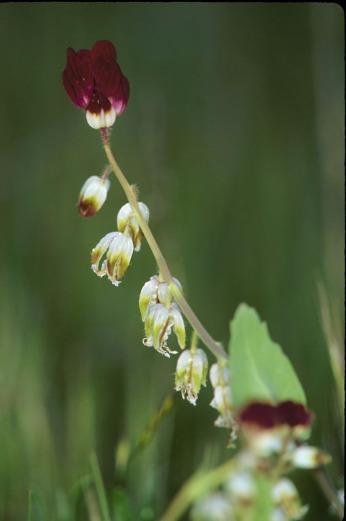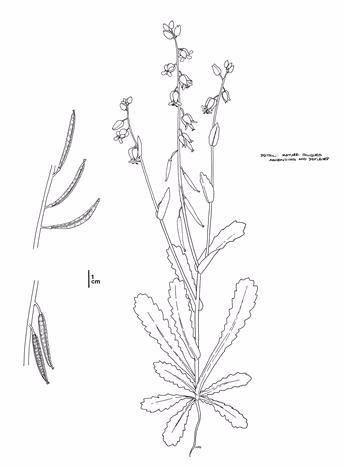(Caulanthus californicus)
 Caulanthus californicus. Photo © William Sleuter.
Caulanthus californicus. Photo © William Sleuter.
 Caulanthus californicus. CDFW illustration by Mary Ann Showers. (Click to enlarge)
Caulanthus californicus. CDFW illustration by Mary Ann Showers. (Click to enlarge)
California jewelflower is a California endangered plant species, which means that killing or possessing plants is prohibited by the California Endangered Species Act (CESA). The species is also listed as endangered under the federal Endangered Species Act. California jewelflower is a small annual herb in the mustard family (Brassicaceae) with maroon and white flowers that typically bloom from mid-March to the beginning of May. California jewelflower is found in a few locations in Fresno, Kern, Kings, San Luis Obispo, and Santa Barbara counties and is presumed to have been extirpated from Tulare County. At the time of this webpage posting, the California Natural Diversity Database reports that of 63 recorded natural occurrences only 33 occurrences of this species are presumed to still exist.
Threats to California jewelflower include habitat conversion, agricultural land conversion, overgrazing, off road vehicle use, urbanization, oil and gas exploration and development, potential solar power development, potential subsurface mineral extraction, loss of pollinators, competition with non-native grasses, and lack of information on the species' status.
Loss of genetic diversity and adaptability may reduce the long term survival of the California jewelflower. There is insufficient data for the overall distribution of the species and this plant would benefit from genetic studies and field surveys to update records of previous sightings and extend knowledge of the species range.
CDFW may issue permits for California jewelflower pursuant to CESA, and you can learn more about the California laws protecting California jewelflower and other California native plants. Populations of California jewelflower occur in CDFW’s Central Region and South Coast Region. More information is also available from the U.S. Fish and Wildlife Service species profile for California jewelflower.